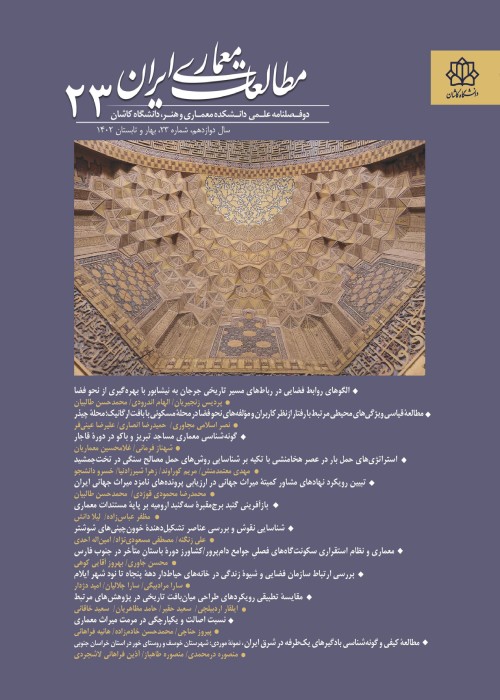Spatial Relations Patterns in the Caravanserais of the Historical Route from Jorjan to Nishapur: A Study Using Space Syntax
Iran's unique geographical position, as a crossroad between various Eastern and Western civilizations, has made it a significant land with important routes throughout different historical periods. Caravanserais, which some of them are registered in the UNESCO list of World Heritage, are an important heritage of historic roads. In the route of the Khorasan or Eastern highway, a branch is located in the north of Khorasan. The historical route from Jorjan to Nishapur has been a point of reference since the 4th to 9th centuries. Only a few caravanserais in Iran remain from before the Safavid period. Since chain caravanserais were likely built simultaneously due to their continuous function of providing shelter for travelers, their chain analysis holds a special position in the studies of architectural patterns. In this research, firstly, using interpretive-historical methods, the route, resting places, and caravanserais from the 4th century onwards were identified. In the next step, relying on the theory of Space Syntax and the resulting justified graphs, the spatial relations of these caravanserais were analyzed, and the governing patterns of these relations were interpreted using logical reasoning methods. The findings indicate that the entrance point to the buildings is unique and serves as the main gateway. Hashti or octagonal vestibule serves as a pivotal communication space in the intermediate area. The stable has access through Hashti, and the tower has access through the stable. Hashti is connected to the entrance courtyard. The rooms are arranged around the courtyard, with the iwan (semi-open vaulted hall in the middle of each side of the rectangular courtyard) serving as the pivotal space between the rooms and the courtyard. The distinguishing feature of the buildings is the presence of additional sections such as the stable and their method of connection to Hashti. Thus, while following a unified pattern, the layout of these buildings is unique for each structure, with considerations such as the number of rooms, Hashti, and stable shape.
- حق عضویت دریافتی صرف حمایت از نشریات عضو و نگهداری، تکمیل و توسعه مگیران میشود.
- پرداخت حق اشتراک و دانلود مقالات اجازه بازنشر آن در سایر رسانههای چاپی و دیجیتال را به کاربر نمیدهد.




